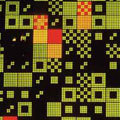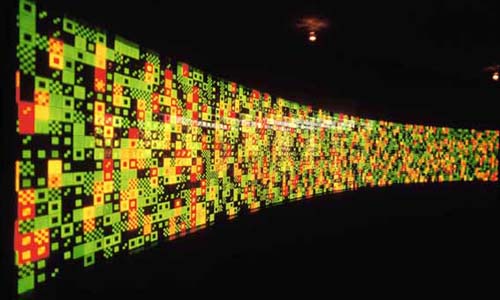 |
 |
||
|
|
|
||
|
|
Ants: an artificial ecosystem Each of the molecules of the BioWall remembers the passage of an
ant, with a memory ranging from no passage (resting state
0) to five successive passages of an ant on the same molecule (state
5): the sixth passage of an ant on the molecule resets its state to 0.
When the BioWall is at rest (all the molecules are in state 0), a pressure on one of the membranes generates an ant. The ant starts moving in a random direction and begins to leave traces of its passage, as defined by the cycle of states of Figure 1. The ant's path is determined by the following rules (Figure 2):
Instructions for use By pressing on an empty molecule (not occupied by an ant), the
visitor creates a new ant. Similarly, by pressing on a molecule
already occupied by an ant, the user kills the ant.
For further information
Resources
|







